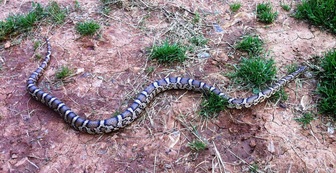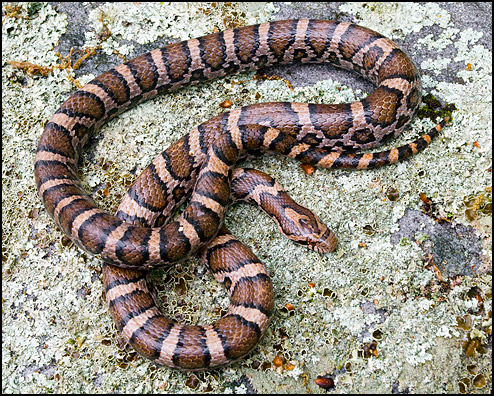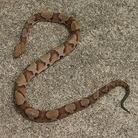|
Eastern Milk Snake
Lampropeltis triangulum triangulum Eastern Milk Snakes are a slender, medium sized snake growing up to 36” in length. They vary in color from grey to tan with several rows of red/brown blotches on their backs and black and white checks on their undersides. They are sometimes confused with the venomous Copperhead snakes with whom they share much of their range. The Copperheads are bulkier snakes, and the blotches that run down their backs are more “butterfly” shaped, narrowing in the middle. The Copperheads also have slit shaped pupils in their eyes while the Milk Snake’s pupils are round. A Copperhead’s head is triangular and is wider than it’s neck while the Milk Snake’s head is more diamond shaped and is only very slightly wider than it’s head. |
The Eastern Milk Snake is native to the northeastern US from Maine to Georgia and west to Minnesota and Iowa. They can be found in a range of habitats including forests, meadows and rocky riverbeds. They are often found on farms and in barns. At one time it was believed that they were there stealing milk from the cows and they were often killed. This is not the case, however, as they do not drink milk, but instead eat a variety of rodents, insects, lizards, and other snakes. Their prevalence on farms is most likely due to the abundance of mice and rats that can often be found in and around barns. Milk snakes are constrictors and kill their prey by wrapping them in their coils and squeezing them till they suffocate. They then swallow their prey whole. These snakes hibernate throughout the winter. They breed in May and lay a clutch of 2 - 17 eggs under stones, logs or in rotting stumps in June-July. The eggs hatch after 6 to 8 weeks in August or September. The hatchlings closely resemble their parents and are ~ 5” - 11” long. Milk snakes can live up to 20 years and are commonly kept as pets due to their relatively small size, attractive coloration and calm disposition.
|




